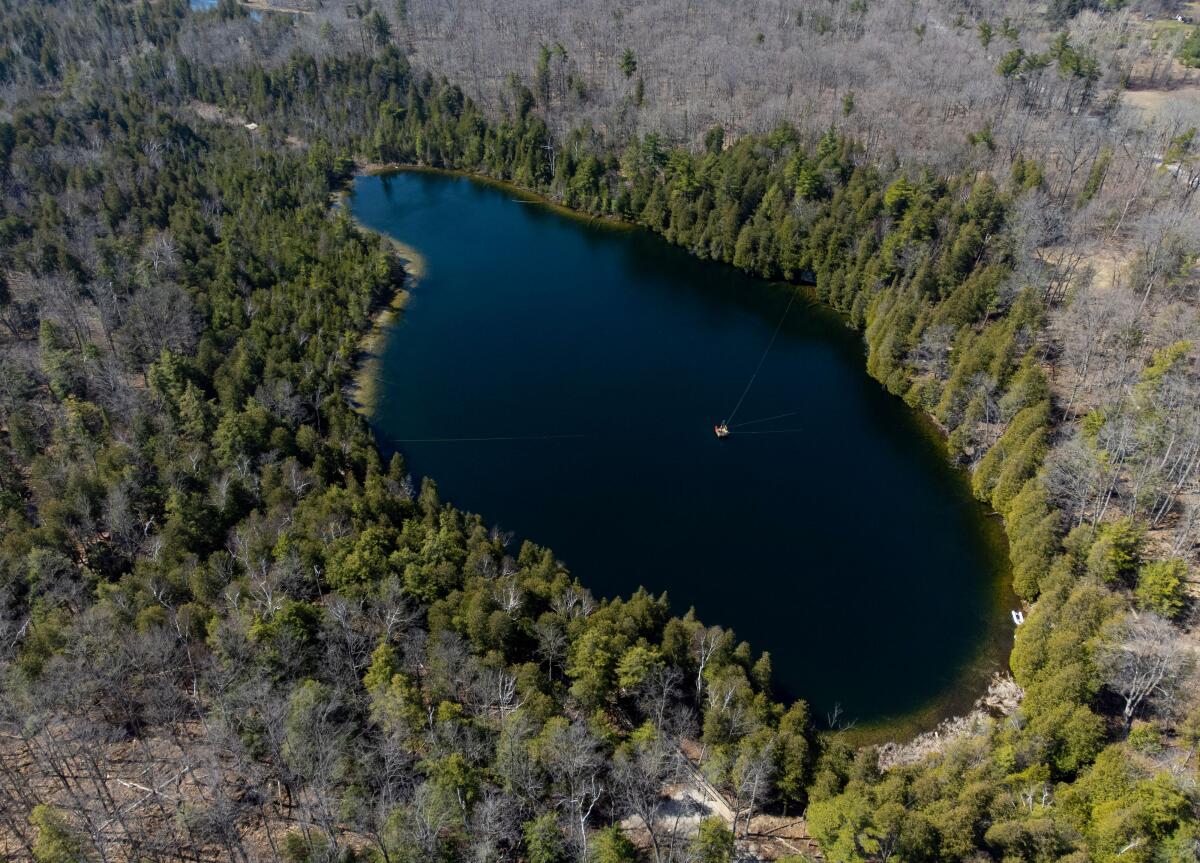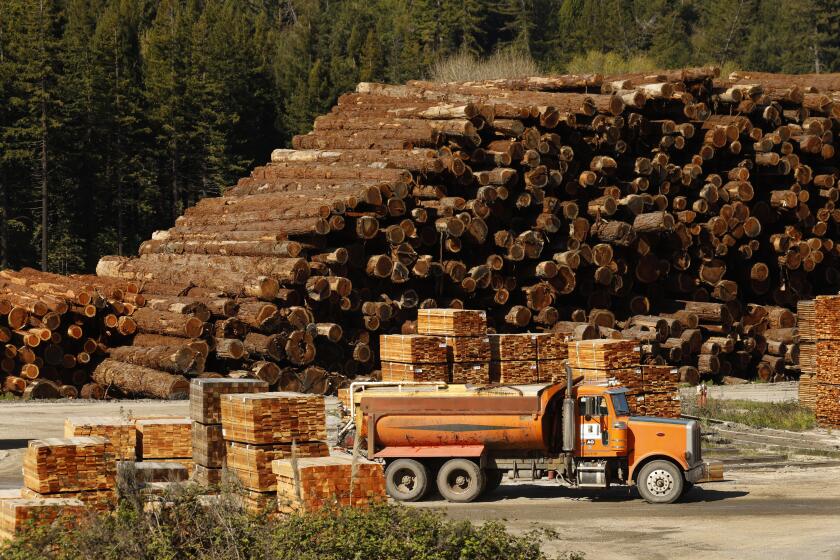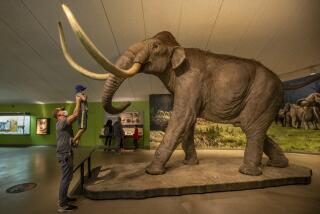Scientists say a new epoch of human impact — the Anthropocene — began in 1950s

- Share via
Humanity has etched its way into Earth’s geology, atmosphere and biology with such strength and permanence that a special team of scientists figures we have shifted into a new geologic epoch, one of our own creation. It’s called the Anthropocene.
A geologic task force is recommending to mark this new epoch’s start in the small but deep, pristine Crawford Lake outside Toronto, Canada with a “golden spike.” The start of the human epoch is sometime around 1950 to 1954. The specific date will be determined soon, probably by levels of plutonium in new measurements from the bottom of the special lake site.
“It’s quite clear that the scale of change has intensified unbelievably and that has to be human impact,” said University of Leicester geologist Colin Waters, who chaired the Anthropocene Working Group that is making the recommendations. “It’s no longer just influencing Earth’s sphere, it’s actually controlling.”
The burning of coal, oil and gas that’s changing Earth’s climate and atmosphere, nuclear bomb detonations spotted in soil around the globe, plastics and nitrogen from fertilizers added on land and dramatic changes to species that make up the rest of the Earth characterize the new epoch, scientists said.
As global demand for wood products is projected to rise over the coming decades, the world is expected to log about 3 million square miles of forestland.
The idea of the Anthropocene was proposed at a science conference more than 20 years ago by the late Nobel Prize-winning chemist Paul Crutzen. For decades teams of scientists have debated the issue and finally set up a special committee to examine whether it was needed, when it would start and where a golden spike would be placed to commemorate the start. Those spikes commemorate new geologic time periods across the Earth.
There are distinct and multiple signals starting around 1950 in Crawford Lake showing that “the effects of humans overwhelm the Earth system,” said Francine McCarthy, a committee member who specializes in that site as an Earth sciences professor at Brock University in Canada.
Because Crawford Lake is 79 feet deep but only 25,800 square feet in area, the layers on the lake bottom are pristine showing what’s in air and on Earth each year, scientists said.
“The remarkably preserved annual record of deposition in Crawford Lake is truly amazing,” said U.S. National Academies of Sciences President Marcia McNutt, who wasn’t part of the committee. “It is just as important to the beginning of an era dominated by one category of Earth species as it is to mark the end.”
The Anthropocene — derived from the Greek terms for “human” and “new” — shows the power and the hubris of humankind, several scientists told the Associated Press.
“The hubris is in imagining that we are in control,” former U.S. White House science advisor John Holdren, who was not part of the working group of scientists and disagrees with its proposed start date, wanting one much earlier. “The reality is that our power to transform the environment has far exceeded our understanding of the consequences and our capacity to change course.”
Jurgen Renn, who wasn’t part of the study group but directs the Max Planck Institute for the History of Science in Berlin, said humans also “need that power, our knowledge, our technologies, but also our capacities of making better societies” to lessen and adapt to the worst consequences of our actions.
This puts the power of humans in a somewhat similar class with the meteorite that crashed into Earth 66 million years ago to kill off dinosaurs, starting the Cenozoic Era and the what is sometimes called the age of mammals. But not quite. That meteorite started a whole new era, scientists propose humans started a new epoch which is a much smaller geologic time period.
Scientists are using a UC Santa Cruz greenhouse to re-create the mass extinction that wiped out the dinosaurs. They want to learn why some species survived.
Geologists measure time in eons, eras, periods, epochs and ages. They propose we have moved from the Holocene Epoch, which started about 11,700 years ago at the end of an ice age to the Anthropocene Epoch.
It also starts a new age. It’s named Crawfordian after the lake chosen as the starting point, and ends the Meghalayan Age that started 4,200 years ago, Waters said.
The proposal still needs to be approved by three different groups of geologists and will ultimately need to be signed off at a giant conference next year.
The reason geologists didn’t make it a bigger time period change is that the current Quaternary Period is based on permanent ice on Earth’s poles, which still exist. But in a few hundred years, if climate change continues and those disappear, it may be time to change that, Waters said.
“If you know your Greek tragedies you know power, hubris, and tragedy go hand in hand,” said Harvard science historian Naomi Oreskes, a working group member. “If we don’t address the harmful aspects of human activities, most obviously disruptive climate change, we are headed for tragedy.”
Borenstein writes for the Associated Press.








